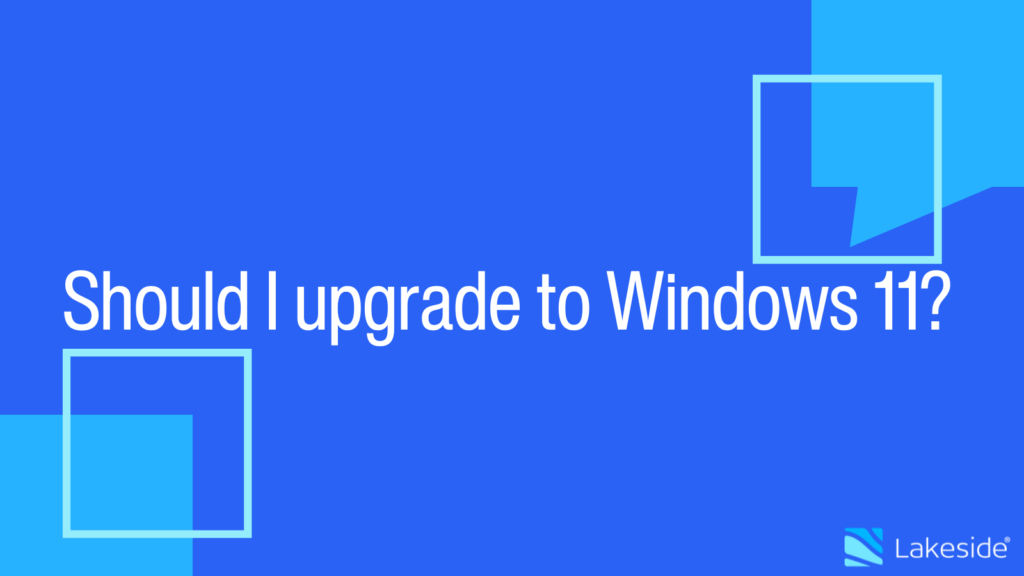RDmi Is Coming. Here’s How Personas Can Help You Prepare

With the release of Remote Desktop modern infrastructure (RDmi) around the corner and Microsoft Inspire just having finished, there’s a lot of discussion around migrating to RDmi environments. RDmi is a new PaaS offering that’s viewed as a redesign of the familiar RDS. This new offering has many new features and security settings including a diagnostic feature that allows analysis for key metrics, such as connection quality, and an easier way to scale your environment based on CPU and RAM usage. Additional integrations allow configurations of single sign-on for your end users and even scalability to their personal needs. How could you not be excited about RDmi with increased security, improved cloud features, and potentially cheaper costs?
Missed the discussion at Inspire? Listen to Lakeside’s perspective at 34:00!
In the midst of all this excitement, you ready your environment for the “lift and shift” method (take the existing work load and move it over to Azure, easy enough). However, you may suddenly realize you don’t know your environment as well as you thought, leaving you with questions like “which applications are in my current environment?” or “what is the baseline end-user experience for my current environment?” What we’ve seen is that when considering new technologies like RDmi or others, one obvious, but maybe not so easy question to answer is “who are the users in my environment, what roles do they play, and what do they need?” Taking the time now to re-evaluate your environment, learn your end-user personas and further right-size your environment can reduce help desk tickets and help you realize savings in the long run.
Why
Creating and fully understanding personas seems like an unnecessary headache. Why not just provide everyone with the same set of applications, hardware, and licenses? Having all these potentially unnecessary applications can cause avoidable issues such as incompatibility errors, security risks for not updating, and the inevitable accumulation of help desk tickets (the more applications, the more tickets, right?). Some users may benefit from being virtualized, but if provisioned the wrong amount of resources, they could lose a lot of productivity. If an end user is assigned the wrong license, it can lead to an even more cluttered environment trying to compensate for what the user needs vs what they were given.
Correctly categorizing end users into personas additionally creates a baseline that helps validate post migration. Having this carefully calculated baseline may bring attention to the unexpected sudden surge of CPU consumption leading to a further investigation through root cause analysis. Gaining insight into what your end users use vs what they were given can help optimize your environment, reduce help desk tickets and save money. So, where should you start?
Does VDI make your end users nervous? Learn how to ease their mind and keep a high VDI end-user experience with our podcast, available on iTunes, Google Play, Stitcher, Overcast, PodBean
Know Your Roles
Know what your users’ job roles require. Some job roles may allow a virtualized desktop environment while others may require a physical laptop. Perhaps your users are better off being in a desktop pool instead of being individual. Having insight into what is acceptable for each job role is vital to high end-user productivity. Knowing what your end users are actually using instead of what you think they should or are using is important to reduce waste and more appropriately reallocate resources.
You may notice that while you provided them with a suite of applications, they’re actually using a different one with better fitting features. You may also notice that some end users are consuming higher resource metrics than others. Having the ability to monitor basic metrics per user is vital to creating personas. Correctly knowing metrics such as their frequency of work (do they only require access to a system for a couple hours a day vs a full work day) or if they’re heavy resource consumers (maybe they require a lot of CPU for heavy applications) can influence if they’re physical or even what license/application suites they’re provisioned.
Some common metrics to monitor for personas include:
- CPU consumption
- Memory consumption
- IOPS consumption
- Network consumption
- Frequently used applications
- User details such as location and hours of work
Always Be Monitoring
Having managed to categorize your end users by their job roles and properly assessed what each job role requires (should they be virtual or physical, what applications are practical for them, what licensing suites fit their needs best) has provided great insight into your environment. However, as time continues, needs and requirements change. Job roles and environments evolve, meaning personas should also evolve. Gaining the ability to have real-time feedback and monitoring is vital to prevent your carefully calculated personas from going stale.
With RDmi’s release around the corner, now’s the perfect time to dust off your personas and optimize assets. Don’t just lift and shift, bend with your knees and use your personas! Further enable right-size fitting before making a large change to an environment. Not only can it create a baseline for validating post migration, but it’ll optimize of your environment, reduce help desk tickets, and potentially save money in the long run. Learn more about how to right-size your environment with SysTrack!
Subscribe to the Lakeside Newsletter
Receive platform tips, release updates, news and more



